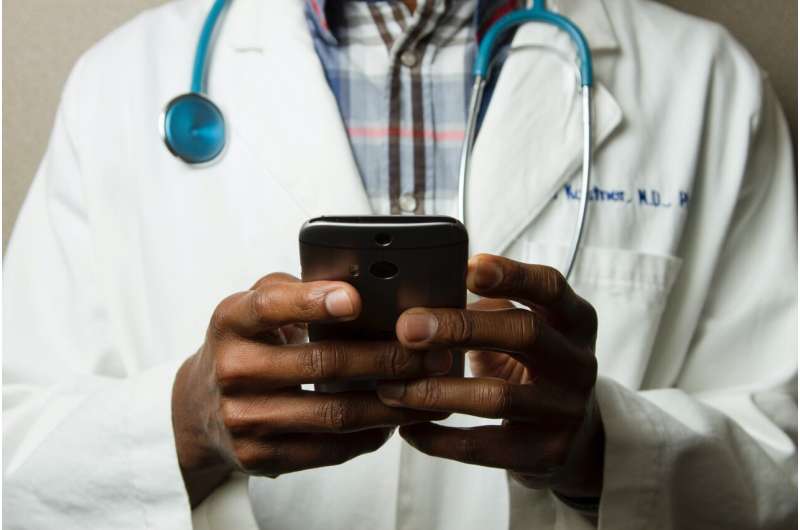
People with advanced cancer who communicated their symptoms weekly using an electronic survey had about a one-third better physical function and over a 15% better control of their symptoms compared to those who were evaluated less frequently via in-person clinical visits, according to findings from a multi-state study conducted at 52 community cancer clinics. The PRO-TECT (Patient Reported Outcomes To Enhance Cancer Treatment) trial was led by researchers at the University of North Carolina Lineberger Comprehensive Cancer Center.
The findings, were published online June 5, 2022, in the Journal of the American Medical Association and simultaneously presented at the 2022 American Society of Clinical Oncology annual meeting in Chicago, provided more in-depth analyses of data that were presented during a virtual ASCO plenary presentation in November 2021.
An estimated 50 percent of cancer-related symptoms go undetected and unreported. Electronic systems that facilitate patient-reported outcome (PRO) surveys may identify symptoms early and prompt clinicians to intervene before the symptoms become more complicated or complex, thereby improving outcomes.
The trial enrolled 1,191 participants. Approximately half (593) were randomly assigned to complete a weekly internet-based or automated telephone system survey that included questions about common symptoms, performance status, and falls. The other half were assigned to a usual delivery of care group, which often meant waiting until their next regularly scheduled clinic visit to report any symptoms. The most common symptoms reported on the electronic survey were fatigue, nausea, insomnia, appetite loss, diarrhea, pain, difficulty breathing and constipation. Alerts were sent to nurses if a patient’s reported symptoms were severe or worsening.
“We had very high engagement with patients and their care teams in this study, with patients completing more than ninety percent of their symptom surveys, and nurses frequently reaching out to patients when severe or worsening symptoms were electronically reported,” said UNC Lineberger’s Ethan Basch, MD, MSc, the paper’s lead author. “This likely reflects how accustomed many patients and providers have become to telehealth and electronic communications.”
Notably, approximately one-third of participants, in mostly rural areas, chose to report their symptoms using an optional automated telephone system rather than the internet. This may reflect limited broadband access in rural locales, or other factors that need to be addressed in future studies to assure that access to programs like PRO-TECT are truly equitable said Basch, who is the Richard Goldberg Distinguished Professor and chief of medical oncology at UNC School of Medicine, director of UNC Lineberger’s Cancer Outcomes Research Program and physician-in-chief of the North Carolina Cancer Hospital.
Patients in the PRO group had significantly greater odds of experiencing clinically meaningful benefits compared with the control group, including a 35% better ability to function physically, a 16.1% better control of their symptoms and a 41% better overall health-related quality of life. These were all clinically meaningful improvements over the current standard of care.
The investigators noted that while the improvements were robust after three months of telehealth reporting, the improvements dissipated after one year. Basch suggests that some of the fall off could be attributed to patients having resolved any needs they had but also possibly due to the decreased number of study participants after a year due to the limited life expectancies of people with advanced cancers. Another factor may have been the COVID-19 pandemic; many healthcare teams were stretched thin and had to prioritize their time, possibly limiting how much they could proactively participate in PRO-TECT.
“PRO-TECT is a way to bring patients together with their care team and aids in identifying those who are at greatest risk,” Basch said. “And because we had equal success at all 52 practices in 25 states, it shows that there’s a wide acceptance for this kind of intervention.”
Source: Read Full Article